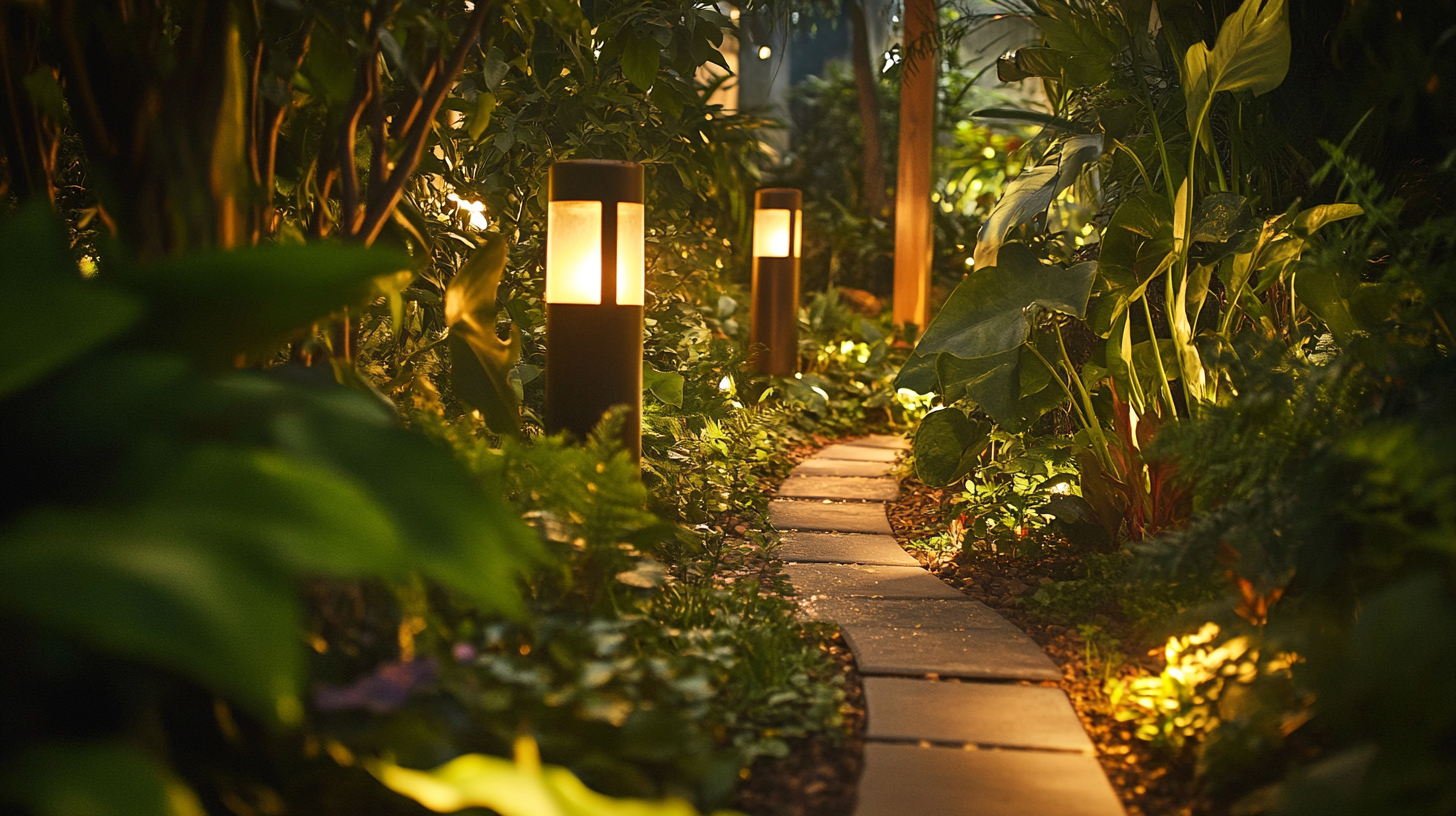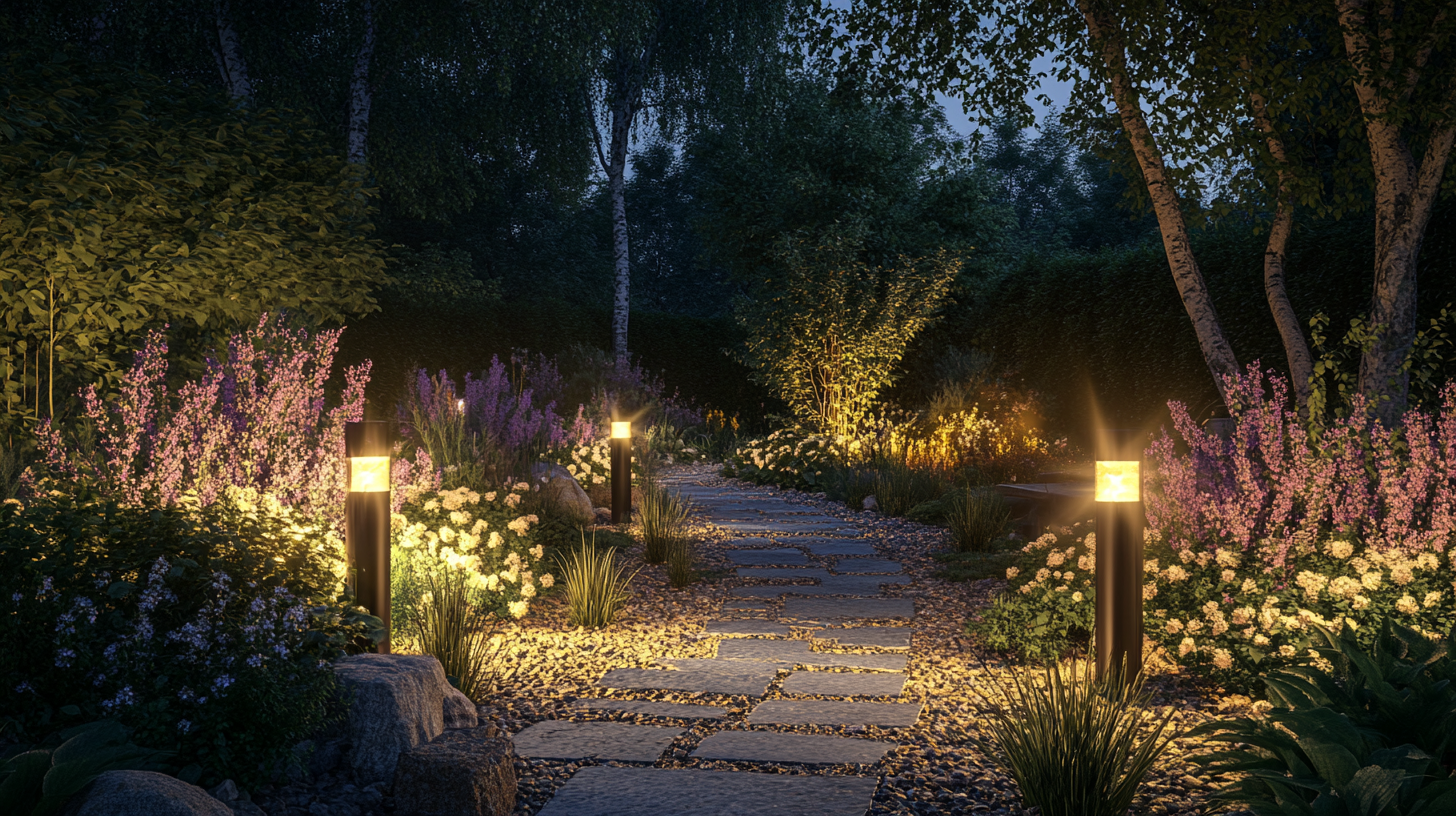Comprehensive Specs of Garden Solar Lights + Tips for Optimal Outdoor Illumination
Garden solar lights have skyrocketed into popularity in the last few years among homeowners who want to grace their verandas with a touch of environmentalism. These brilliant lighting devices utilize solar energy, thus providing cheap and sustainable means of lighting any garden, path, or patio. A huge variety of designs, styles, and features not only beautify but also add safety and security to every nook and corner of outdoor living by lighting it up where there is little light.
This blog aims at an all-encompassing specification of various garden solar lights, which means our goal is to help you determine the features that matter most to you in selecting the right items for your outdoor space. We will also provide useful hints and tips on how to illuminate the outdoor areas best so that your garden will shine in all its glory. If the end goal is to create a warm atmosphere or simply illuminate your landscape, mastering the garden solar lights will change your living lifestyle outdoors.

Understanding the Key Specifications of Garden Solar Lights
Learn the key specifications of garden solar lights to learn how to use them well. The most important among all these is the brightness output - the lumens. Depending on the area and specific brightness requirement, you should choose the fixture. For pathways, for example, lights within the range of 50-100 lumens would suffice, while larger areas of the garden lit at night may require more overhead from the fixtures, perhaps 200 or more lumens. One should consider the purpose to which brightness is dedicated, with such illuminated areas being functional as well as aesthetically pleasing.
Another equally important specification is the efficiency of the solar panel and the capacity of the battery. Since they'll hold more current, higher efficiency would convert directly into operating time, meaning the power would last for longer hours even during the night. Look for those ones that have batteries with energy storage sufficient for longer days, sunny and cloudy alike. Generally, a good battery would provide light for 8 hours or more after a full charge, thus lighting your garden brightly after dusk.
And finally, last but not least, all solar lights should be maintained with weather resistance and durability. Almost all models can withstand such weather conditions, but it is advisable to check the IP rating, which tells you the level of protection against weather changes. The higher the rating like IP65 or above, the better the light has resistance to dust and water and thus can be used outdoors any time in a year. The features specified will not only polish the ambiance of your garden but keep the light earning throughout the seasons.

Types of Garden Solar Lights: Choosing the Right One for Your Space
It's, therefore, an important consideration to be aware of the various solar lights involved before selecting the correct type for your particular garden. They exist in widely varying styles, all intended for completing certain tasks. For example, solar string lights would create a festive atmosphere for outdoor events, and pathway lights would illuminate sidewalk areas for safety and aesthetic purposes. At the same time, the spotlight and floodlight types would serve to highlight features of landscaping or secure the perimeter of one's home. Each one of these types has its own benefits, thus necessitating one's own evaluation of requirements before choosing a type.
Innovations such as the smart lighting systems from Eufy at IFA 2024 propel the changes that are constantly occurring in solar technology. Anker Innovations and its brand Solix are taking these advances to the maximum limit humanly possible, taking the future of solar energy for smart outdoor lighting into their own hands. In other words, with solar lights that are smart, control over outdoor lighting can be done remotely from a smartphone, thus awarding convenience and flexibility toward the garden atmosphere.
As cities embrace greener futures—like in the ambitious plan to turn mountain areas into eco-friendly urban spaces—solar lightings might factor into that shift. Picture a city with solar rooftops and solar-powered street lighting, which will create a friendly environment towards its inhabitants and tourists alike. Great uses of garden solar lights will help bring this vision into reality by augmenting outdoor areas while helping in the quest for a cleaner, sustainable planet.

Factors Affecting Solar Light Performance: What to Consider
There are many factors that affect solar garden lights regarding their performance and efficiency. One of the most important is the quality of the solar panel in absorbing sunlight. According to a report from the Solar Energy Industries Association (SEIA), a good solar panel usually absorbs 15%-20% of the sunlight to convert into usable energy. Therefore, buying solar lights with efficient panels will mean being able to collect much energy during the daytime, which results in brighter and longer-lasting lights at night.
Battery capacity and type are another important factor. Generally, solar lights use either lithium-ion batteries or nickel-cadmium batteries; lithium-ion systems are more efficient and long-lived than the latter. According to a journal published in the Journal of Renewable Energy, lithium-ion batteries are able to package about five hundred cycles at a hundred percent depth of discharge, while nickel-cadmium batteries are constrained to approximately two hundred cycles. With that kind of performance, putting up solar lights for outdoor use could go a long way toward effective performance with maintenance cost deductions in the long run.
Weather conditions significantly affect how solar lights work. The National Renewable Energy Laboratory (NREL) gives actual assurance that sunnier places with continual sunshine would provide the best performance in solar energy use. Therefore, solar lights have to be considered by homeowners again, especially in a region with many cloudy days, because these typically have internal components for the efficient charging. It sheds light on important aspects that enable one to make the right and optimal choices for outdoor illumination, for the whole year.

Tips for Installing Your Garden Solar Lights for Maximum Effectiveness
It requires proper preparations and thoughtful placements to install garden solar lights for maximum effect. Reports from the industry show that efficient placement of solar lights can enhance security and make outdoor spaces more enjoyable all year long. Particularly lighting entrances, patios, and pathways serves to light key areas and dissuade potential intruders, thus improving the safety of the outdoor spaces.
Four easy advice will help your solar lights operate even in winter, which is a general concern among homeowners. First, install lights at places, which get full sunlight during the days, since that will definitely keep on providing light during the shorter winter days much longer. Then try to have those solar lights with the motion sensors because they can also save the battery when you don't need the light, but when you do need it, it's there. Besides, with all the regular maintenance like cleaning dirt and snow off the panels, they will surely be dimming and would keep performing.
Of course, there are also the broken ones where design meets function. Hobbyists and DIYers who enjoy both form and function will find great reviews of outdoor solar lights showcasing a bold fusion of the two, while most products are put to the test under parameters like brightness and longevity. Suitable fixtures placed strategically can light a well-landscaped garden beautifully and keep it functional and secure all year round.
Maintenance and Care Tips to Extend the Life of Your Solar Lights
Maintaining Solar lights is in a way that they would earn lighting from using energy-efficient and environment-friendly options as latest trends in outdoor illumination. Improper maintenance entails where the lights are not bright enough at the end of their period (not working properly in their lifetime). Solar lighting lasts from around 5 to 7 years, according to a report prepared by the Solar Energy Industries Association. But this period can really shorten with poor maintenance.
The most important maintenance to know is to clean solar panels. Dust, dirt, and debris accumulation can block sunshine and cause reduced efficiency for solar lights by as much as 20%. It is just good enough to clean the light as you would with mild soap and water for its performance optimization. Setting the lights at a place receiving full sunlight for at least six hours a day is another critical factor. This is in order for the batteries to charge fully and provide a brighter performance at night.
Another maintenance factor is the batteries. Most solar lights will operate using rechargeable batteries, that tend to deteriorate over time. Checking them and replacing them at least every 1 to 2 years is advisable to prevent degradation in performance. A publication by the Journal of Renewable Energy states proper maintenance of a battery can add years into the life of solar lights so that it can be used bright and effective for several years. Other preventive measures include keeping connections corrosion-free and inspecting them routinely.





